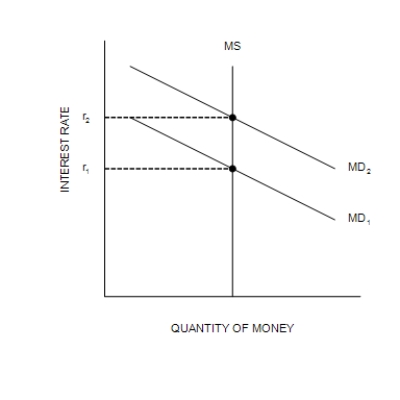Multiple Choice
Figure 34-2
(a) The Money Market
(b) The Aggregate Demand Curve 

-Refer to Figure 34-2. A decrease in Y from Y1 to Y2 is explained as follows:
Comprehend the role of cartels in oligopolistic industries and the effects on output and price.
Identify the applications and implications of game theory in the analysis of oligopolistic market behavior.
Understand the concept of the kinked-demand curve in explaining pricing behavior and price rigidity in oligopolistic markets.
Recognize the conditions under which collusion might occur in oligopolistic industries and its impact on market outcomes.
Definitions:
Related Questions
Q248: Over the last fifty years both real
Q252: Assuming a multiplier effect, but no crowding-out
Q282: Refer to Figure 34-1. There is an
Q305: Which of the following would cause prices
Q339: Which of the following properly describes the
Q463: The multiplier effect states that there are
Q467: An increase in households' desired money holding
Q490: Explain the logic according to liquidity preference
Q496: Assume the MPC is 0.8. Assuming only
Q555: Refer to Figure 33-10. If the economy